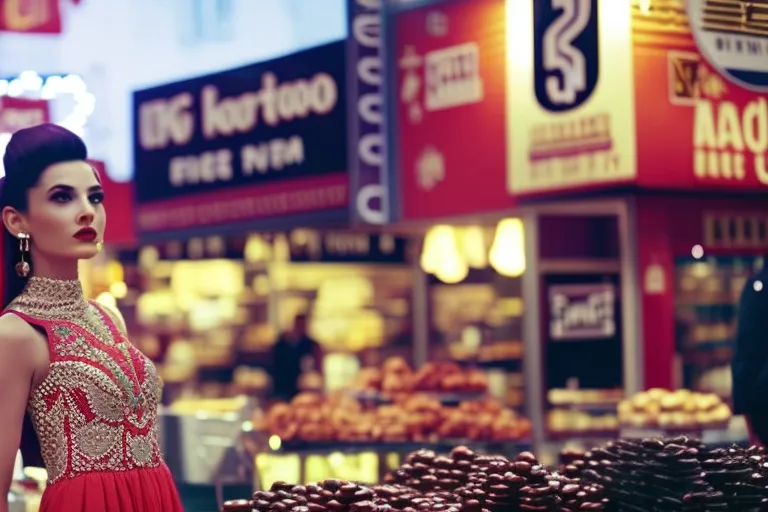When visiting Tbilisi, Georgia, it is impossible not to notice the vibrant and colorful traditional clothing worn by locals. Georgian traditional clothing is not only beautiful but also has a rich history and cultural significance. In this blog post, we will take a journey through time and explore the evolution of Georgian traditional clothing.
The Origins of Georgian Traditional Clothing
Georgian traditional clothing dates back to ancient times and has been influenced by various cultures throughout history. The traditional clothing of Georgia is known for its bright colors, intricate patterns, and unique design.
The earliest record of Georgian clothing dates back to the 4th century BC, during the reign of King Parnavaz. At this time, the clothing was simple and made of wool. Over time, the clothing became more elaborate and was influenced by various cultures, including the Persians, Greeks, and Turks.
During the 12th and 13th centuries, Georgia experienced a period of prosperity and cultural development. This period is known as the Georgian Renaissance, and it was during this time that Georgian clothing became more elaborate and decorative. The clothing was often made of silk and was decorated with intricate embroidery and precious stones.
The Chokha: The Iconic Georgian National Costume
The Chokha is the most recognizable traditional clothing of Georgia. It is a long coat made of wool or silk and is worn by men. The Chokha has a unique design with long sleeves and a high collar. It is often decorated with intricate embroidery, and the colors vary depending on the region. The Chokha has been worn by Georgian men for centuries and is still worn on special occasions such as weddings and festivals.
The Chokha has a rich history and cultural significance. It was worn by Georgian warriors during battles and was a symbol of bravery and strength. In the 19th century, the Chokha became a symbol of Georgian national identity, and it was worn by many Georgian intellectuals and artists.
Today, the Chokha is still an important part of Georgian culture, and it is often worn by politicians and other public figures. It is also a popular souvenir for tourists.
The Koko: The Female Counterpart to the Chokha
The Koko is the female version of the Chokha. It is a long dress made of silk or wool and is also decorated with intricate embroidery. The Koko has a unique design with long sleeves and a high collar. It is often worn with a headscarf and is also worn on special occasions.
The Koko has a similar history and cultural significance to the Chokha. It was worn by Georgian women during battles and was a symbol of strength and resilience. In the 19th century, the Koko became a symbol of Georgian national identity, and it was worn by many Georgian women.
Today, the Koko is still an important part of Georgian culture, and it is often worn by women on special occasions such as weddings and festivals.
The Papakhi: The Traditional Georgian Hat
The Papakhi is a traditional Georgian hat made of sheepskin. It is often worn with the Chokha and is a symbol of Georgian masculinity. The Papakhi has a unique design with a round shape and a fur lining. It is often worn in cold weather and is also a popular souvenir for tourists.
The Papakhi has a long history in Georgia and was worn by shepherds and other rural workers. It became popular among the urban population in the 19th century and was worn by many Georgian intellectuals and artists.
Today, the Papakhi is still an important part of Georgian culture, and it is often worn by men on special occasions such as weddings and festivals.
The Tika: The Traditional Georgian Headdress
The Tika is a traditional Georgian headdress worn by women. It is made of silver or gold and is often decorated with precious stones. The Tika has a unique design with a circular shape and is worn on the forehead. It is often worn with the Koko and is a symbol of Georgian femininity.
The Tika has a long history in Georgia and was worn by women of all social classes. It became popular among the urban population in the 19th century and was worn by many Georgian women.
Today, the Tika is still an important part of Georgian culture, and it is often worn by women on special occasions such as weddings and festivals.
Modern Georgian Fashion: A Fusion of Tradition and Modernity
In recent years, Georgian fashion has undergone a transformation, with designers incorporating traditional elements into modern designs. Georgian fashion designers have gained international recognition for their unique and innovative designs.
One of the most famous Georgian fashion designers is Demna Gvasalia, who is the creative director of Balenciaga. Gvasalia is known for his avant-garde designs that incorporate traditional Georgian elements.
Where to Buy Traditional Georgian Clothing in Tbilisi
If you are interested in buying traditional Georgian clothing, Tbilisi is the perfect place to do so. Here are some of the best places to buy traditional Georgian clothing in Tbilisi:
- Dry Bridge Market: This flea market is a great place to find vintage Georgian clothing and accessories.
- Tbilisi Mall: This shopping mall has a variety of stores that sell traditional Georgian clothing and accessories.
- Tbilisi Central Market: This market is a great place to find traditional Georgian clothing, including the Chokha and Koko.
Conclusion
Georgian traditional clothing is not only beautiful but also has a rich history and cultural significance. The Chokha, Koko, Papakhi, and Tika are just a few examples of the unique and intricate traditional clothing of Georgia. If you are interested in buying traditional Georgian clothing, Tbilisi is the perfect place to do so.
